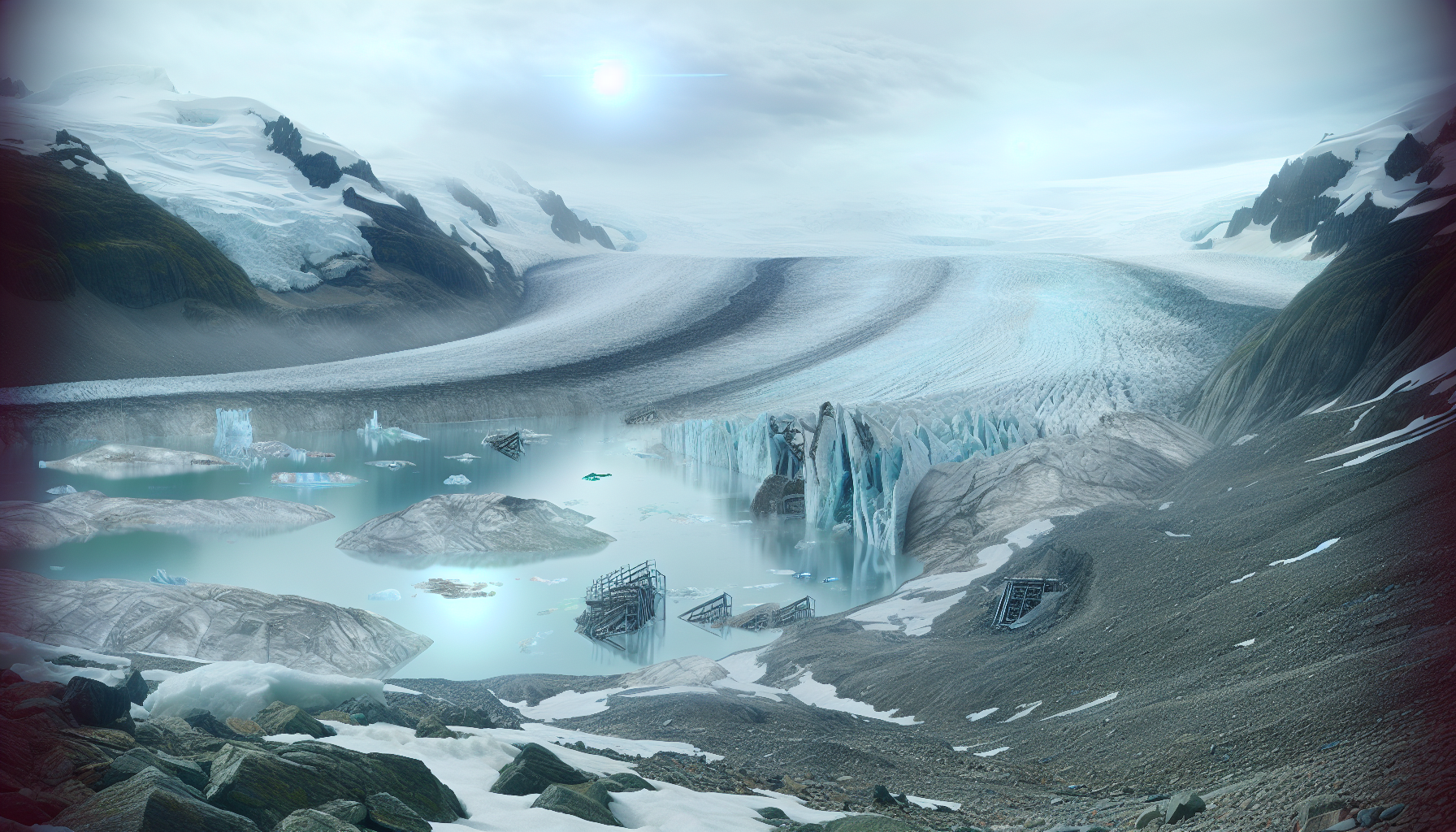In an era of cascading environmental failures, a monolithic presence stands as a chilling testament to what once was – the planet’s last glacier. Nestled in a sorrowful valley, where the whispers of our ancestors’ warnings went unheeded, it is all that remains of a frozen world that thrived with life and diversity. This icy sentinel defies the searing heat of an age born of human hubris, bearing witness to a bygone era of ecological balance.
‘In the Shadow of the Last Glacier’ takes you on an immersive journey to the heart of our planet’s final frozen stronghold. Like the proverbial canary in the coal mine, this glacier is more than a mere spectacle; it is a harbinger of the dystopian reality we have crafted for ourselves. We explore the unsung narratives etched into its retreating walls, the biodiversity clinging to its icy cradle, and the bleak horizon it signifies for our collective future.
Scientists once marveled at glaciers, adulating over these colossal natural archives. Each layer of ice encapsulated a story – a snapshot of Earth’s climate sealed away in perpetuity. Now, the dwindling icy layers are more than petrified memoirs; they are stark reminders of the relentless march toward an inhospitable planet. With the drips of meltwater, each a somber note in nature’s requiem, we learn of tales once preserved within the glacial grasp – microorganisms, rare isotopes, and even forgotten pathogens.
Experts gathered at the base of the glacier, their countenances etched with despair. Dr. Sylvia Aguilar, a renowned climatologist, uttered a poignant reflection, ‘We are witnesses to the dying breaths of the Earth’s thermal equilibrium. Each drop of water that falls from this glacier carries the weight of centuries. If only the world had listened.’
As we traverse the valleys sculpted by millennia of glaciation, the stark barren landscapes prompt a reflection on the consequences of unbridled consumption and the sacrifices made at the altar of endless growth. The few resilient wildlife species found in these parts are testimony to nature’s tenacity – a reindeer herd, a solitary polar bear, a choir of snow petrels – but the melody is dimming, overshadowed by the cacophony of their vanishing habitat.
Echoing the previous reports, like the recent ‘Frozen Tombs – Unearthed Histories from Melting Ice’ which described organic materials and historical artifacts freshly liberated from their frigid prisons, ‘In the Shadow of the Last Glacier’ contemplates the juxtaposition of scientific riches against a backdrop of climate catastrophe. The dichotomy between excitement for new discoveries and remorse for their implications is palpable amid the foreboding silence.
Yet amidst the frozen desolation, the spirit of human ingenuity endures. From the ashes of environmental calamity sprung forth radical endeavors – geoengineering feats that attempt to retard the demise of our last icy monument. But these efforts, fraught with ethical quandaries and the risk of unforeseen consequences, underscore the severity of our predicament. Do they signify our refusal to capitulate to doom, or are they the desperate gasps of a civilization in denial?
In this twilight of glaciers, stories emerge from the ice, compelling yet tragic. Tales of ancient civilizations, of flora and fauna long extinct, of Earth’s climatic upheavals are now being whispered to us by the ice, if only we dare listen. But, as we stand in the shadow of the last glacier, these stories are not just to be heard; they are to be heeded.
As darkness encroaches, the ice – drenched in the blood-red hue of sunset – is not merely melting. It is weeping. The watercourses flowing from it are not streams but tears – tears for a world that could have been, for a future that was once within our grasp. Will the last glacier’s lament be a dirge or a galvanizing anthem for those who will listen? The answer lies not in the shadow of the ice, but in the reflection we find within ourselves as we contemplate the dying embers of a once vibrant world.
This solemn sojourn under the looming presence of the last glacier serves as an elegy for the past and an omen for the future. It whispers a question to which we already know the answer; it’s not about whether a rebirth from the ashes is possible, but whether we have the collective will to confront the inferno we’ve ignited before everything is reduced to embers.
